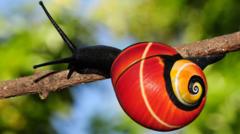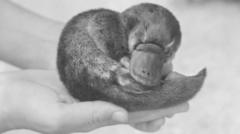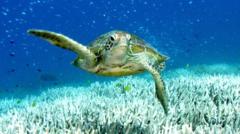The mission to conserve Cuba's Polymita snails faces challenges from climate change and the desire for their beautiful shells.
A Collaborative Effort to Rescue Cuba's Stunning Polymita Snails

A Collaborative Effort to Rescue Cuba's Stunning Polymita Snails
Researchers team up to save the endangered Polymita snails from extinction due to shell trade.
Researchers have initiated a dedicated mission to save the Polymita snails, praised for their breathtaking shells, from imminent extinction. Endemic to Eastern Cuba, these snails boast vibrant and intricately patterned shells but are endangered due to the lucrative shell trade that caters to collectors. A partnership has been formed between Cuban biologists and the University of Nottingham in the UK, aiming to protect the six recognized species of Polymita.
Among them, Polymita sulphurosa stands out with its striking lime green, blue flames, and bright orange-and-yellow bands. "Their exquisite beauty is a dilemma," stated evolutionary geneticist Prof Angus Davison from the University of Nottingham. He points out that the very attributes that captivate scientists and collectors are perilously placing the snails at risk. He found numerous online platforms selling these shells—one listing a set of seven for £160, underscoring the threat of extinction with unregulated collection.
Although international regulations exist under the Convention on International Trade in Endangered Species, enforcement is problematic. Collecting shells in Cuba without permits is illegal, but selling them elsewhere is not, amplifying the risk of local extinction as the snails’ habitats are further jeopardized by climate issues and deforestation.
Prof Davison collaborates with conservation biologist Prof Bernardo Reyes-Tur from Universidad de Oriente, hoping to delve into Polymita snails' evolution and genetic makeup for informed conservation efforts. Reyes-Tur's work includes nurturing captive breeding of the snails at his home under challenging conditions, where consistent power supply is uncertain.
In contrast, the University of Nottingham provides advanced laboratory facilities for in-depth genetic studies. By analyzing tiny snail tissue samples, the researchers aim to ascertain the number of species and their genetic relationships, particularly focusing on the genetic basis for their vibrant colors.
The united goal is to uncover the biological mysteries of these enchanting snails before their fate is sealed by collectors. Prof Davison emphasized the unique ecosystem of Eastern Cuba and expressed hope that their research will contribute to effective conservation strategies to protect the remaining populations against extinction.
Among them, Polymita sulphurosa stands out with its striking lime green, blue flames, and bright orange-and-yellow bands. "Their exquisite beauty is a dilemma," stated evolutionary geneticist Prof Angus Davison from the University of Nottingham. He points out that the very attributes that captivate scientists and collectors are perilously placing the snails at risk. He found numerous online platforms selling these shells—one listing a set of seven for £160, underscoring the threat of extinction with unregulated collection.
Although international regulations exist under the Convention on International Trade in Endangered Species, enforcement is problematic. Collecting shells in Cuba without permits is illegal, but selling them elsewhere is not, amplifying the risk of local extinction as the snails’ habitats are further jeopardized by climate issues and deforestation.
Prof Davison collaborates with conservation biologist Prof Bernardo Reyes-Tur from Universidad de Oriente, hoping to delve into Polymita snails' evolution and genetic makeup for informed conservation efforts. Reyes-Tur's work includes nurturing captive breeding of the snails at his home under challenging conditions, where consistent power supply is uncertain.
In contrast, the University of Nottingham provides advanced laboratory facilities for in-depth genetic studies. By analyzing tiny snail tissue samples, the researchers aim to ascertain the number of species and their genetic relationships, particularly focusing on the genetic basis for their vibrant colors.
The united goal is to uncover the biological mysteries of these enchanting snails before their fate is sealed by collectors. Prof Davison emphasized the unique ecosystem of Eastern Cuba and expressed hope that their research will contribute to effective conservation strategies to protect the remaining populations against extinction.



















